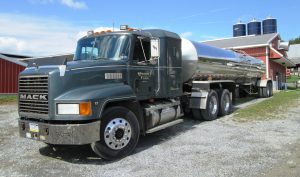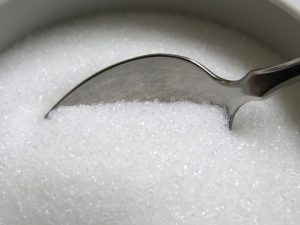Hot Chocolate Supply Chain
By Alex Batty, MHI Marketing Communications Coordinator |@mhi_alex
‘Tis many people’s last day before break, so we’re doing something holiday-y. Apparently it has become my habit to look at something that is typically associated with a holiday and figure out the supply chain for it.
Usually that something is food. What can I say, the way to my heart (and brain it would appear) is through my stomach.
Since I started this job, it has taken over my brain, and I now see supply chain EVERYWHERE. Because it is. It touches basically anything I can think of, which is super convenient when trying to come up with topics for this blog.
I bought some hot chocolate last night to give in holiday presents, so let’s take a look at what it takes to make some hot chocolate. We’re going to look at the homemade version, not the instant mix, because I don’t know what all goes in the instant stuff. I just drink in blissful ignorance.
INGREDIENTS LIST:
Cocoa powder
Whole milk
Semisweet chocolate
Demerara or granulated sugar
Lightly sweetened whipped cream
And now let’s trace the supply chain of each. Let’s start with chocolate. We can check off the cocoa powder and semisweet chocolate in one go. While the cacao tree originated in Central/South America, 2/3 of the modern world’s cocoa production comes from West Africa. Cacao pods are harvested, fermented, and dried. They are then transported (via supply chain) to a chocolate manufacturing facility, where they’re crafted and sent to consumers (via supply chain).
Random fact: There is a difference between chocolate makers and chocolatiers. Chocolate makers use harvested cacao beans and other ingredients to produce couverture chocolate (covering). Chocolatiers use the finished couverture to make chocolate candies (bars, truffles, etc.).
Milk, whole + whipped cream. Comes from cows. The US is actually the top producer for milk (91 million tons in 2013) so go us. I actually know how this works in intricate detail. No Googling necessary. My undergrad degree was at what originally was the state agricultural college, so I’ve toured a dairy production facility. Steps are (very simply): Milk cows, move milk products through pasteurization/production, distribute (via supply chain).
Sugar comes in many forms, but the most commonly used is granulated. The largest producers (as of 2012) were Brazil and India, so we probably get most of ours from Brazil. Sugar can be made from sugarcane and sugar beets. I actually lived in a town growing up where there was a sugar beet facility. For producing something sweet, it definitely did not smell good. Sugar needs to be transported moisture free to prevent caking, but otherwise is fairly simple to ship as long as you have the right container.
Your hot chocolate comes to be because of supply chain gathering ingredients from all over the world. When you’re holding that sweet delicious warmth in your hands, just remember supply chain makes it happen.
BONUS: At Halloween I discovered that Aqua (the group behind ear worm Barbie Girl) had a Halloween song (https://www.youtube.com/watch?v=ipXN8kzyF5o) and it’s a bop! I wanted to see if they came through for Christmas, and I present “Spin Me A Christmas”
https://www.youtube.com/watch?v=6hov-M7LK6Q
It’s not nearly as good as “Halloween” but since I had to sit through the music video for the sake of research, I’m making you do so as well *finger guns*.







